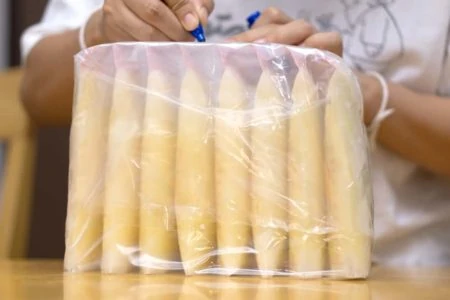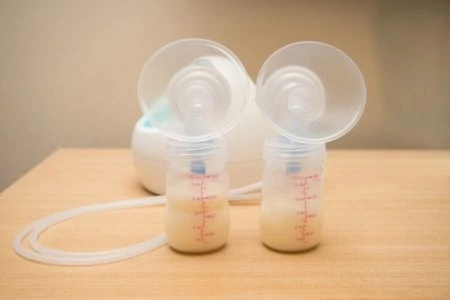Breastfeeding is natural, but let’s be honest; it isn’t always easy. While finding a rhythm takes time, it is not supposed to be agonizing. So, what should you do if you are dealing with cracked nipples, rock-hard breasts, or toe-curling pain?
We are breastfeeding moms too, so we understand the struggle. If you are frustrated by the pain, we are here to help you troubleshoot.
In this article, we will break down the common causes of breastfeeding pain, explain actionable remedies, and help you decide when it is time to call a professional.
Key Takeaways
- Pain is often a signal of an improper latch, tongue tie, or infections like mastitis and thrush.
- Relieve discomfort by adjusting your hold, using warm or cool compresses, and sticking to a feeding schedule.
- Nipple creams and shields can provide temporary relief while your skin heals from initial tenderness.
- Consult a lactation consultant or doctor immediately if you experience fever, red streaks, or pain that lasts beyond the first few weeks.
Causes of Breastfeeding Pain
Let’s look at the most common culprits behind the pain. While your symptoms might match one of these descriptions, always check with your doctor or a lactation consultant for an accurate diagnosis.
1. Improper Latch
The latch is simply how your baby attaches their mouth to your breast. If the connection isn’t deep enough, it can cause significant pain for you and ineffective feeding for them.
Ideally, your baby’s mouth should cover most of the areola, not just the nipple. However, several factors can prevent this:
- Weak suck: Premature babies or sleepy newborns may not have the strength to hold a deep latch.
- Tongue-tie: This condition, known as ankyloglossia, restricts the tongue’s movement.
- Positioning: You may not be holding them at the right angle for their mouth shape.
- Nipple confusion: Switching between bottles and breasts early on can sometimes confuse the sucking reflex.
A shallow latch leads to friction, trauma, and overall soreness.
2. Engorged Breasts
If your breasts feel swollen, hot, and rock-hard, they are likely engorged. This happens when milk isn’t removed frequently enough.
Engorgement often strikes when your milk first “comes in” or if you miss a feeding. It is your body adjusting to how much milk your baby needs (1).
If you skip sessions or rely heavily on bottles without pumping, the backup of fluid causes tight, heavy, and painful breasts.
3. Clogged Milk Ducts
Your breasts rely on a complex system of ducts to transport milk. Occasionally, a duct can become obstructed or compressed, causing milk to back up. This results in a tender, localized lump (2).
The most common cause is insufficient drainage. If the breast isn’t emptied, the milk thickens and traffic jams occur.
Clogged ducts are common but happen more often if baby struggles to transfer milk. External pressure, like a tight bra strap or sleeping on your stomach, can also trigger a clog.
4. Mastitis
If a clogged duct or engorgement isn’t managed, it can escalate to mastitis. Mastitis is an inflammation of breast tissue that may involve an infection. It is characterized by a wedge-shaped area of redness, intense pain, and flu-like symptoms such as fever and chills (3).
Bacteria entering through cracked skin on the nipple is a common entry point for infection.
While mastitis makes you feel terrible, you generally do not need to stop breastfeeding. In fact, frequent removal of milk is key to recovery (4).
5. Thrush
Thrush is a yeast infection (Candida) that thrives in warm, moist environments like a nursing bra (5). Unlike the dull ache of a clog, thrush often causes sharp, shooting pains in the breast and itchy, flaky, or shiny nipples.
To determine if thrush is the culprit, check your baby’s mouth. Because it is easily passed back and forth, you might see white, stubborn patches on their gums or tongue that look like milk but won’t wipe away.
6. Let-down Pain
“Let-down” is the reflex that ejects milk from your milk-producing cells into the ducts (6). Hormones trigger this release when your baby suckles or even when you hear them cry.
For many women, this feels like a mild tingling. However, some experience a sharp, painful “pins and needles” sensation. This is often more intense in the first few weeks as your body regulates supply.
7. Sore and Cracked Nipples
Some initial tenderness is normal, but cracked, bleeding, or scabbed nipples are not. This damage turns every feeding into a challenge.
The primary cause is almost always a shallow latch. If the nipple rubs against the hard palate of the baby’s mouth instead of landing near the soft palate, friction damage occurs.
Your routine matters, too. Harsh soaps, scrubbing the nipples, or trapping moisture against the skin can prevent healing (7).
8. Blebs
Blebs are small, white spots on the tip of the nipple. They are essentially milk blisters (8). A thin layer of skin grows over a duct opening, trapping milk behind it.
Some moms don’t feel them, but for others, blebs cause piercing pain during suction. They are frequently associated with recurrent clogged ducts.
9. Vasospasms
If your nipple turns white, then blue, then red after feeding, you may be experiencing vasospasms. This is a constriction of the blood vessels, often linked to Raynaud’s phenomenon (9).
The pain is often described as deep, throbbing, or burning. It can be triggered by a poor latch compressing the nipple or by sudden exposure to cold air after the baby unlatches.
10. Breast Pumps
If you use a breast pump, the machine itself could be causing your pain. Here is why pumping might hurt:
- Incorrect flange size: If the tunnel is too small or too large, it rubs the nipple raw.
- High suction: More suction does not equal more milk. High settings can damage tissue.
- Duration: Pumping for too long can cause edema (swelling) in the areola.
Pumping should be comfortable. If it hurts, check your fit and settings immediately.
How to Deal With Breastfeeding Pain
You don’t have to grit your teeth and bear it. Addressing the pain early helps you maintain your supply and your sanity. Here are ten actionable remedies to try.
1. Breastfeed Early
Try to nurse within the first hour of birth.
It takes a few days for copious milk production to start. Before that, your breasts are soft and contain colostrum (10). Learning to latch on a soft breast is much easier for a newborn than trying to latch onto a hard, engorged one.
2. Improve Your Latch
Fixing the latch is the single most effective way to stop the pain. Wait for your baby to open their mouth wide (like a yawn) before bringing them to the breast. The goal is an off-center latch where they take in more of the areola below the nipple than above.
When latching, aim the nipple at your baby’s nose. As soon as your baby opens their mouth wide, quickly bring them toward your body. You should bring your baby to the breast rather than vice versa. Your baby’s body should face your body with no space between the two of you.
Editor's Note:
Michelle Roth, BA, IBCLC3. Find a Lactation Consultant
Sometimes you need an expert set of eyes. An International Board Certified Lactation Consultant (IBCLC) can identify issues like tongue ties or positioning errors that you might miss.
They can observe a feed, weigh your baby, and give you a personalized plan. Ask your hospital, pediatrician, or local support group for a referral.
4. Consistently Breastfeed
Skipping feedings tells your body to make less milk and causes painful pressure buildup. Try to maintain a predictable rhythm.
If you are away from your baby or they are sleeping longer stretches, use a pump or hand express to relieve pressure. This keeps your ducts flowing and prevents engorgement.
5. Continue Breastfeeding
Unless a doctor tells you to stop, keep nursing. Stopping abruptly can lead to severe engorgement, clogs, and abscesses.
Interestingly, breast milk itself is a healer. Expressing a few drops of fresh milk and rubbing it onto sore nipples can help soothe and repair the skin thanks to its immunological properties (11).
6. Use a Nipple Cream
When choosing a nipple cream, look for organic, food-grade ingredients like lanolin or olive oil that are safe for your baby to ingest, so you don’t have to wipe it off before feeding. A good balm creates a moisture barrier to prevent scabbing and cracking. Here are a few top-rated options:
- Lansinoh Lanolin Nipple Cream
- bamboobies Organic Nursing Balm
- Bella B Nipple Nurture Butter
- Motherlove Nipple Cream
Always spot-test a new cream on a small patch of skin first. Avoid vitamin E oil, as it can be toxic to infants in large amounts.
7. Warm and Cool Compresses
Temperature therapy is a simple, free tool.
- Warmth: Apply moist heat before a feed to stimulate blood flow and trigger the let-down reflex. This helps with clogs.
- Cold: Apply ice packs or cold gel pads after nursing to reduce swelling and inflammation caused by engorgement.
8. Use Nipple Shields
A nipple shield is a thin silicone barrier worn over the nipple during feeding. It can protect raw skin from friction, giving it a chance to heal.
These should generally be used temporarily and under the guidance of a lactation professional, as they can impact milk transfer. However, if the alternative is quitting breastfeeding, a shield can be a breastfeeding saver.
9. Loose Clothing
Tight bras and underwire can compress milk ducts, leading to clogs. While you are dealing with pain, prioritize comfort.
Switch to soft, wire-free nursing tanks or sleep bras. If you are at home, going braless allows air to circulate around the nipples, which speeds up the healing of cracks.
10. Visit Your Doctor
If you have a fever, red streaks on your breast, or pain that persists despite your best efforts, call your provider. Infections like mastitis often require antibiotics. Getting medical help early prevents complications and gets you back to comfortable nursing sooner.
Breastfeeding Pain FAQs
In Conclusion
Breastfeeding is a learned skill for both you and your baby. Like any new skill, there is a learning curve, and sometimes that curve hurts. But remember, pain is a signal, not a requirement.Listen to your body, use the remedies above, and do not hesitate to reach out for professional support. You are doing a great job, and with the right adjustments, it can get better.













